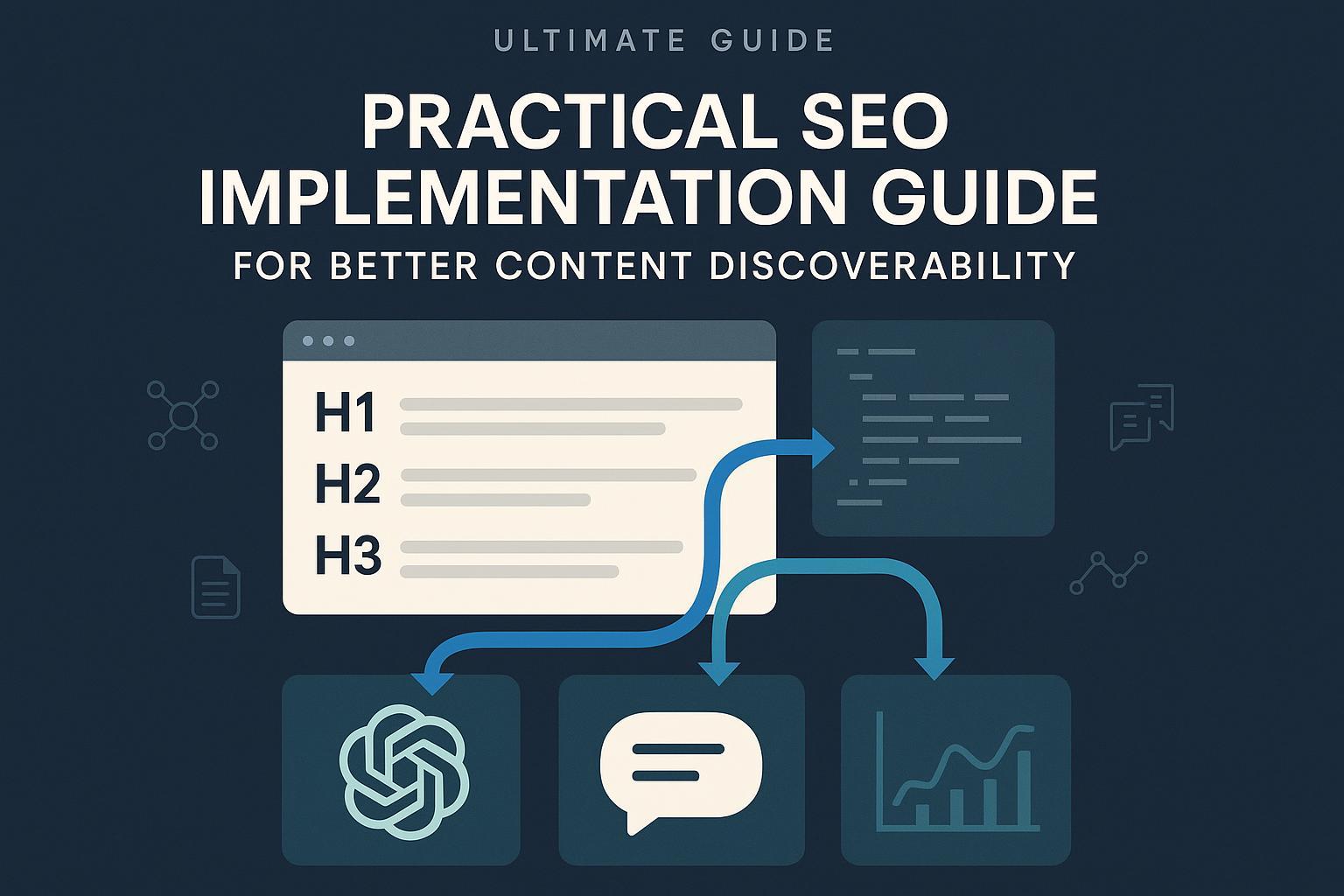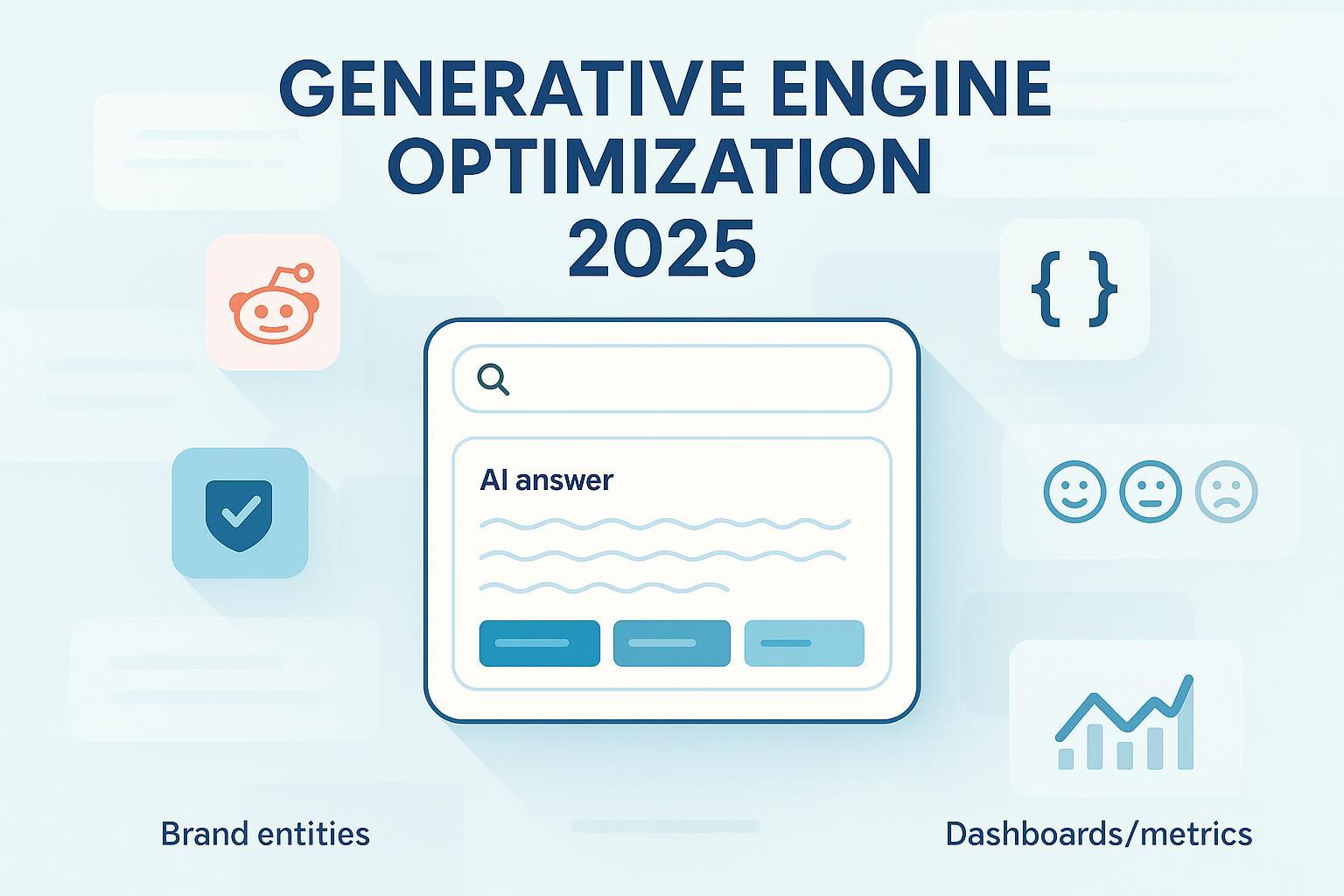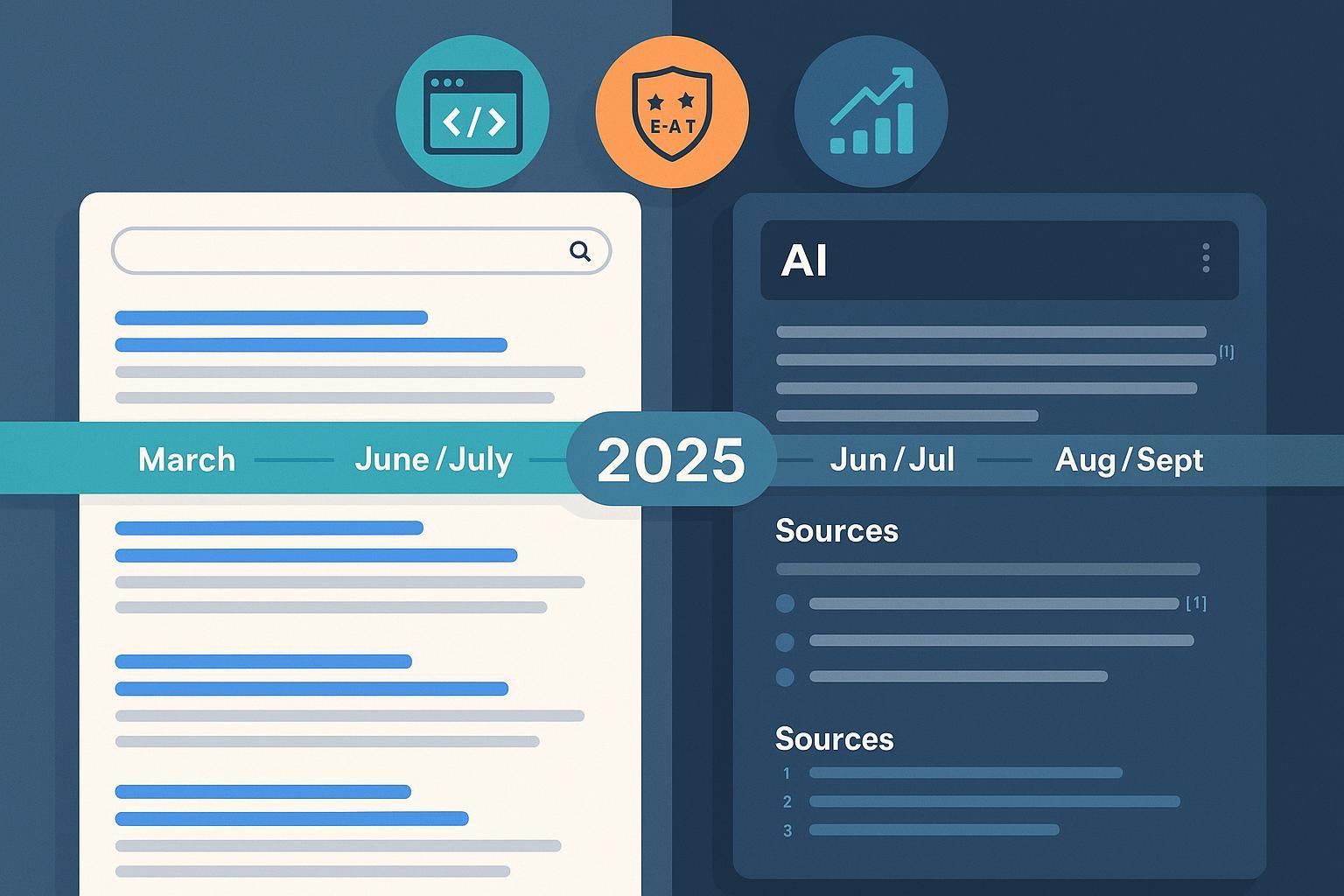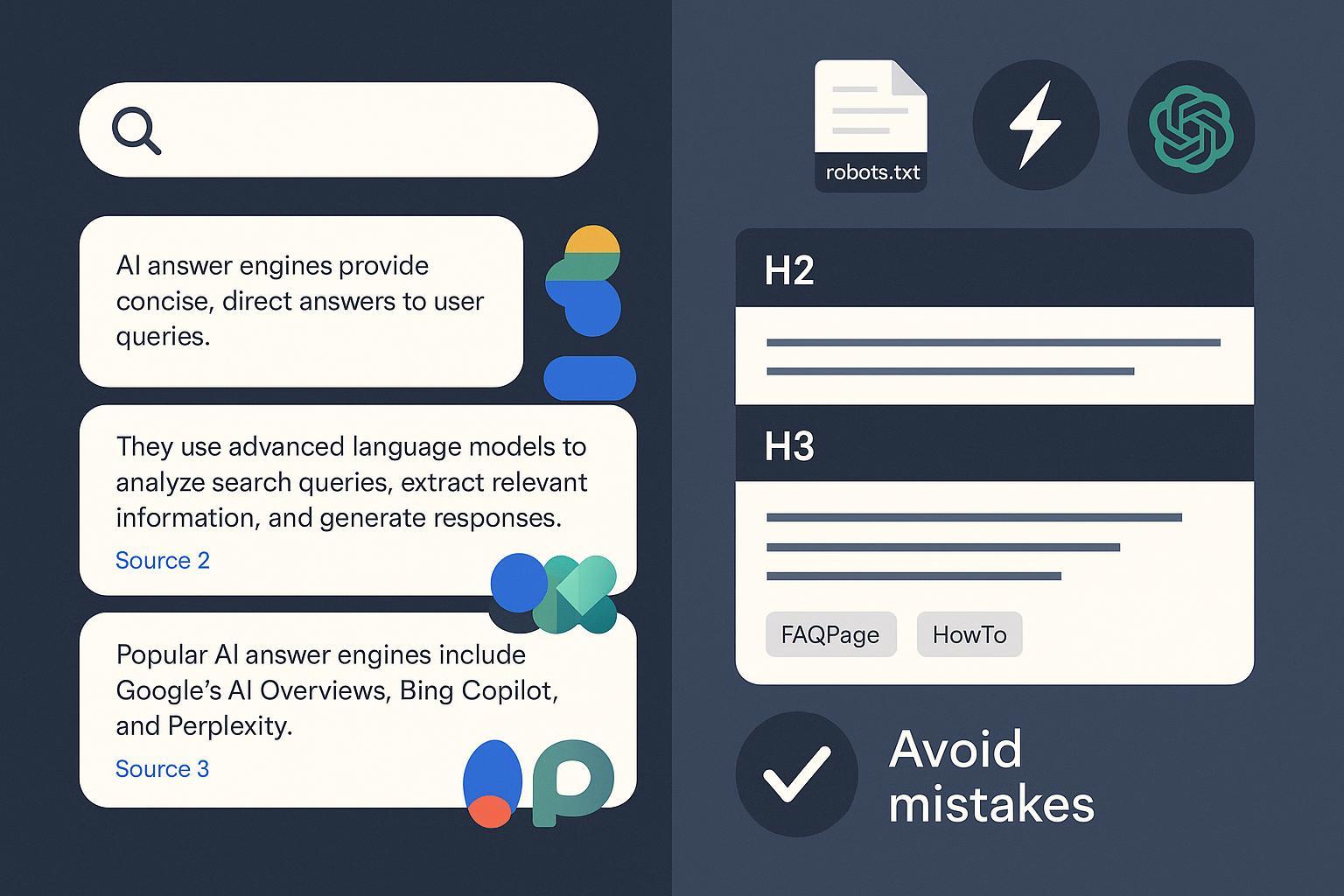Brand Voice Explained: Definition, SEO Impact, and GEO/AEO Guide
What is brand voice? Learn its core meaning, difference from tone, business and SEO impact, and how consistency boosts GEO/AEO and AI search visibility.
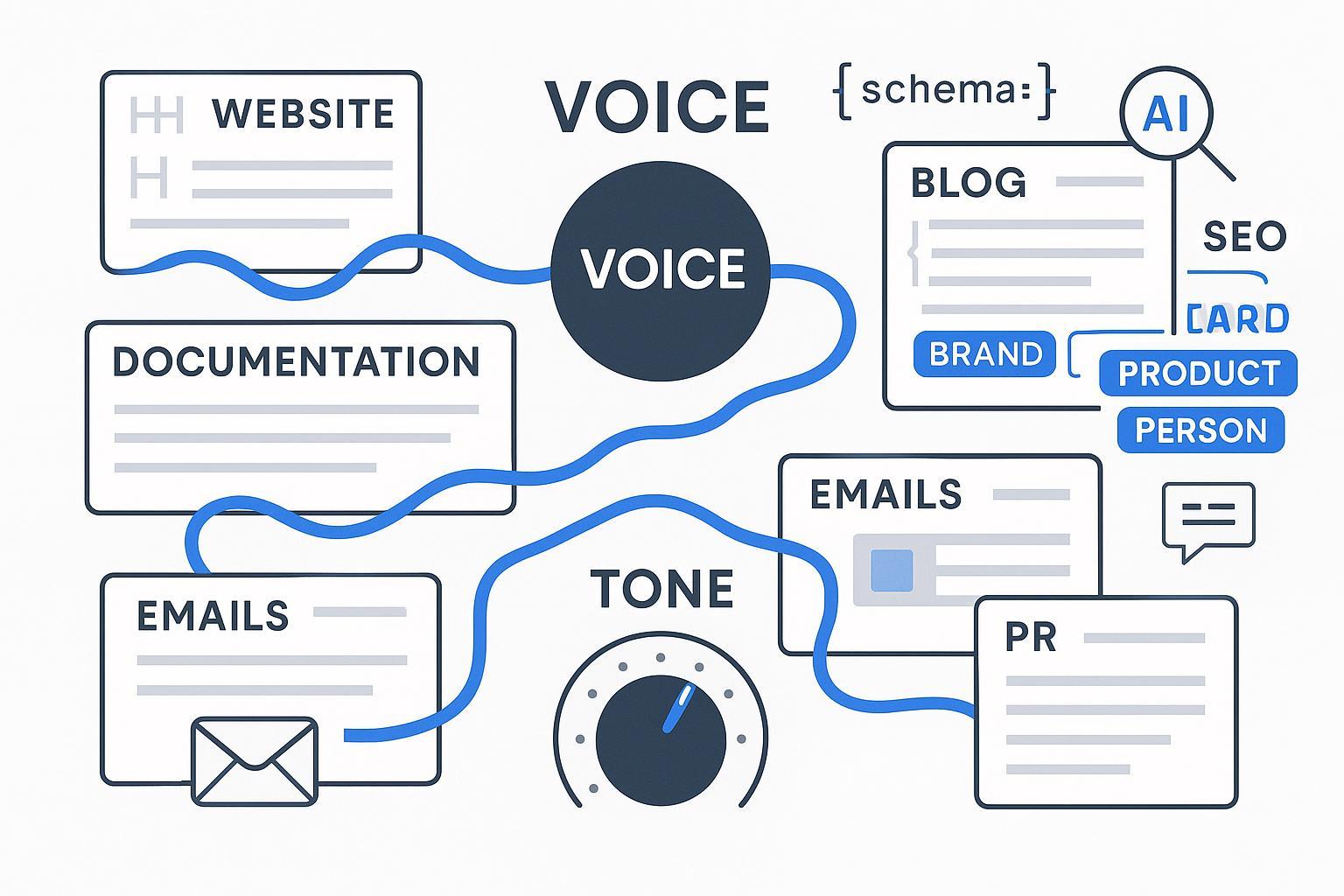
If you’ve ever felt that your content sounds different depending on who wrote it or where it lives, you’re bumping into a brand voice problem. Voice is the throughline that makes every surface—from product pages to docs to PR—feel unmistakably yours. Getting it right doesn’t just “sound nicer”; it improves trust, content operations, and your visibility in both traditional search and AI answers.
Key takeaways
Brand voice is the enduring linguistic identity of your brand; tone is how that voice adapts to a specific context.
Consistent voice strengthens recognition and trust and streamlines content operations.
For SEO, a clear, consistent voice supports E‑E‑A‑T signals like authorship, citations, and structured clarity, aligning with Google’s guidance on helpful content.
For GEO/AEO, consistency in terminology, entities, structure, and attribution helps answer engines and AI systems identify, quote, and correctly attribute your content.
Definition: brand voice vs. brand tone (with a simple analogy)
Brand voice: your brand’s enduring personality, point of view, and values expressed in language—stable across channels and time.
Brand tone: the situational modulation of that voice—warmer in a welcome email, more formal in a security notice.
Analogy: Voice is your identity; tone is your mood. Your identity doesn’t change, but your mood adjusts to the moment. This distinction is echoed in accessible explainers like Shopify’s overview of brand voice and tone, which show how voice stays constant while tone flexes across situations (see “what is brand voice” from Shopify, ongoing).
For hands-on tone guidance, content teams often use frameworks that map tone along axes like formality and humor; the Nielsen Norman Group describes these “tone dimensions,” clarifying how to vary tone without losing the underlying voice (NN/g, 2020s). Mailchimp’s writing guide similarly emphasizes that voice is consistent while tone changes by scenario, with concrete examples across channels (Mailchimp, ongoing).
Read more: the explanation of “creating helpful, reliable, people-first content” by Google (2024–2025) is compatible with a stable voice and context-aware tone, because both serve clarity and user trust.
Why brand voice matters beyond “sounding good”
1) Content quality, trust, and operational efficiency
A consistent voice builds recognition and trust over time—an effect aligned with analyses of long-term brand investment in market position and awareness (Forrester, 2023–2024). It also reduces internal friction: fewer rewrites, faster onboarding, and clearer governance for distributed teams. Survey-based reports have also linked brand consistency with measurable commercial benefits; for example, Marq/Lucidpress summarizes that brands reporting strong consistency often see notable uplifts in visibility and revenue, though these figures are self-reported and correlational (Marq, 2019–2024).
See the broader argument on the tangible value of sustained brand investment in Forrester’s perspective (2023–2024).
See the Marq roundup of brand-consistency findings for indicative benchmarks (2019–2024).
2) SEO and E‑E‑A‑T alignment
Google’s guidance encourages helpful, reliable, people-first content with transparent authorship and sourcing. A consistent voice reinforces clarity and reliability, while structured, scannable writing and proper attribution improve understanding by both readers and machines (Google Search docs, 2024–2025). Practical tie-ins:
Authorship and provenance: Use bylines with robust author bios and a clear About page; support with Article, Person, and Organization structured data (Google Article structured data, 2023–2025).
Structure for extraction: Answer-first summaries; descriptive H1–H3s; bullets; tables.
Evidence and citations: Reference authoritative primary sources and standards where claims require support.
3) GEO/AEO and AI search visibility
Answer Engine Optimization (AEO) emphasizes answer-first formatting, Q&A headings, concise definitions, and structured clarity that makes extraction straightforward—practices covered in AEO explainers and featured-snippet primers from established SEO educators (Conductor and Ahrefs, 2024–2025). Generative Engine Optimization (GEO) adapts SEO for AI systems like Google’s AI Overviews, Perplexity, and ChatGPT, focusing on entity clarity, quotable facts, and provenance so your brand is accurately represented when models synthesize information (Backlinko, 2023–2025; Google AI features in Search, 2024–2025).
Why voice consistency helps GEO/AEO:
Consistent terminology and entities: Use canonical names for your brand, products, and people to reduce ambiguity in entity resolution. Research indicates that grounding models with accurate entity linking can lower hallucination risks in generated summaries (arXiv entity‑linking studies, 2024–2025).
Factual density: Include clear, verifiable, quotable statements and first‑party facts.
Attribution and structure: Stable authorship, organization details, and schema strengthen provenance—important for systems like AI Overviews, which surface information grounded in high‑quality sources and link to originals (Google, May 2024 update).
What brand voice is not (boundary check)
Not just for social copy: Voice must guide product pages, documentation, emails, PR, support content—and even metadata.
Not the same as tone: Voice is the identity; tone flexes by context while staying aligned with voice.
Not at odds with SEO: Clear, structured, evidence-backed writing helps crawlability, featured snippets, and AI parsing when tied to facts and entities.
A practical framework to operationalize brand voice (SEO- and AI-ready)
1) Define 3–4 voice pillars
Examples: Clear & Accessible; Benefit‑Driven; Authoritative & Forward‑Looking. For each pillar, document “sounds like” and “doesn’t sound like,” plus 2–3 sample sentences.
2) Build a lexicon and entity glossary
Publish canonical names (brand, products, features), preferred synonyms, disallowed words, abbreviations, and People/Organization entities with canonical spellings and profiles. This aids both human editors and AI entity resolution.
3) Structure for answers
Start with an answer-first summary or definition block.
Use question‑led H2/H3s, bullets, tables, and short, quotable paragraphs.
Add TL;DR or Key Takeaways boxes to high‑intent pages.
4) Authorship and provenance
Require bylines with author bios that demonstrate experience and expertise; maintain a consistent About page and editorial standards page.
Implement JSON‑LD schema: Article, Person, Organization, and where relevant FAQ, HowTo, and Product. Validate with Google’s rich results tools (Google structured data docs, 2024–2025).
5) Pre‑publish editorial checklist
Voice alignment: Does the copy reflect each pillar?
Terminology and entities: Are canonical names used consistently? Are entities introduced clearly?
Evidence: Are claims anchored to primary sources where needed?
Structure: Answer‑first summary, descriptive headings, bullets/tables present?
Links: Helpful internal paths to cornerstone pages and selective external citations.
Schema: Correct, complete, validated.
6) Governance and training
Centralize your style guide and examples; run onboarding workshops; and publish quick “do/don’t”s by content type (blog, docs, release notes, product UI, lifecycle emails). Revisit quarterly to refine examples without changing the core voice.
7) Quick‑start checklist (clip‑and‑use)
Voice pillars defined with examples
Entity glossary and lexicon published
Answer‑first summary added to the top 20% of pages by traffic
Bylines and author bios standardized; About page updated
Article, Person, Organization schema live; FAQ/HowTo where relevant
Internal link patterns defined to cornerstone content
External citations added for claims
Editorial “AI‑ready” checklist embedded in briefs
Quarterly audit of AI answer visibility and sentiment
Measurement: connect voice consistency to outcomes
To make brand voice a performance lever, tie it to metrics across channels:
Content engagement: CTR from SERPs, dwell time, scroll depth, conversions (GA4/GSC).
SEO indicators: Featured snippet eligibility and rich results health via structured data validation (Google’s Rich Results tools, ongoing).
AI search visibility: Share of voice in AI answers, inclusion in Google AI Overviews, and the accuracy of how models describe your brand. Google does not publish a guaranteed checklist for AI Overviews; infer impact via performance trends and third‑party monitoring. Google’s “AI features in Search” and the May 2024 AI Overviews update outline how systems ground outputs in high‑quality sources and include links to originals.
Sentiment: Track how AI systems and answer engines characterize your brand over time; look for shifts after voice and structure improvements.
Tip: Run an A/B‑style operational test. Apply the full voice/structure stack (answer‑first, entity glossary, schema, citations) to a priority cluster, then compare engagement and search/AI visibility over 6–8 weeks versus a similar control cluster. Keep claims correlational; avoid attributing causality solely to voice changes given multiple confounders.
Short examples
Product page: Use canonical product and plan names; lead with a one‑sentence value definition; include a concise specs table; add an FAQ with question‑style headings and FAQ schema.
Blog tutorial: Open with a 2–3 sentence TL;DR; structure steps under H2s; cite standards or vendor docs for technical claims; end with a micro‑glossary of introduced entities.
Thought leadership: Anchor assertions with third‑party reports; state the author’s relevant expertise up front; close with a one‑paragraph summary quote suitable for citation.
FAQ
Does a strong brand voice limit rankings? No. Clarity, consistent entities, and structured content support both user understanding and machine parsing, which can help snippet eligibility and AI answer inclusion when paired with verifiable information. See featured‑snippet and AEO guidance from established SEO sources (Conductor and Ahrefs, 2024–2025).
Voice vs. tone—how often do we change them? Voice is stable; revisit annually to refine examples. Tone adapts by context (e.g., incident updates vs. launch emails) while staying faithful to the core voice. For tone frameworks, see NN/g’s tone dimensions and Mailchimp’s voice‑and‑tone examples.
Do we still need schema if we have bylines? Yes. Schema helps machines understand relationships between the article, author, and organization and can improve eligibility and presentation in search results (Google Article structured data, 2023–2025).
References and further reading
“What is brand voice?” overview and examples from Shopify (ongoing).
“Creating helpful, reliable, people‑first content” by Google (2024–2025).
Article, Person, Organization structured data guidance by Google (2023–2025).
Featured‑snippet and AEO primers from Conductor and Ahrefs (2024–2025).
Generative Engine Optimization (GEO) explainer by Backlinko (2023–2025).
Google’s AI features in Search and AI Overviews update (May 2024).
Forrester on the tangible value of brand investment (2023–2024).
Marq/Lucidpress brand‑consistency survey roundups (2019–2024).
arXiv research on entity linking and hallucination reduction in LLMs (2024–2025).
Next steps
Disclosure: Geneo is our product.
Start a free plan with Geneo to monitor your AI search visibility and sentiment while you roll out your voice guidelines, then use the insights to prioritize which pages to optimize next. First‑time mention: visit Geneo to learn more.
Prefer a guided walkthrough for your team? Book a demo to see workflows for tracking AI answer share‑of‑voice, brand mention accuracy, and sentiment over time.
—
Inline source highlights to explore:
“Creating helpful, people‑first content” (Google, 2024–2025): Google Search docs — Creating helpful content
“Article structured data” (Google, 2023–2025): Google — Article structured data
“AI features in Search” and AI Overviews (Google, 2024–2025): Google — AI features in Search; Google — AI Overviews update (May 2024)
“Answer Engine Optimization” primers: Conductor — Answer Engine Optimization; Ahrefs — Answer Engine Optimization
“Generative Engine Optimization”: Backlinko — Generative Engine Optimization
Brand value and consistency: Forrester — Brand is a long game; Marq — Competitive advantage of brand consistency
Entity grounding research: arXiv — Entity Linking with LLMs (2024–2025)

